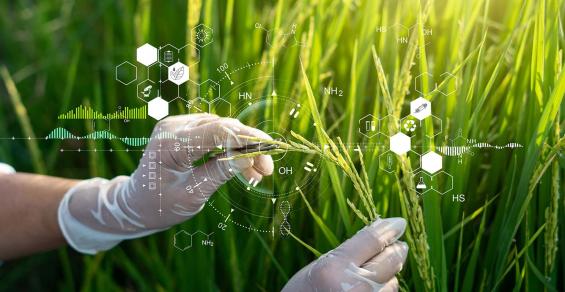New research strategy from USDA and USAID emphasizes agriculture’s role in global food security.
The issue of global food security is more important now than ever. Prices for food, fuel and fertilizer continue to rise around the globe and there is no clear end in sight for conflict in the Black Sea.
Today, Secretary of Agriculture Tom Vilsack and USAID Administrator Samantha Power released the U.S. government’s Global Food Security Research Strategy. The plan underscores our country’s commitment to ending hunger and malnutrition and building sustainable food systems.
The new research strategy comes in response to the updated Global Food Security Strategy released in October 2021. While the objectives of the GFSS remain the same, the updated strategy prioritizes climate change, equity and inclusion, and affordable high-quality diets.
The GFSS makes clear that sustainable growth of ag productivity is the most effective way to reduce extreme poverty and hunger by lifting incomes and making healthy diets affordable. A 1% increase in agricultural gross domestic product per worker results in two to four times the impact on poverty compared to increases in labor productivity in industry or services.
USDA and USAID developed the Global Food Security Research Strategy with input from scientific societies, universities, federal research agencies and researchers. The new research strategy focuses on three areas where science and innovation are essential to progress:
Climate-smart agricultural innovations
Improved nutrition through high-quality, affordable diets, and
Genetic improvement of resilient crops and livestock
As a result of today’s announcement, the strategy will guide investments in technologies, tools, and practices and help identify research opportunities to improve food security. Current opportunities include reducing greenhouse gas emissions, improving carbon sequestration through soil health and improving irrigation and water usage technology.
The new strategy builds on past achievements made possible by U.S. investments in agriculture research. Examples include averting global wheat harvest failure from a strain of wheat stem rust over the last 15 years and bringing drought-tolerant corn to eastern and southern regions of Africa.
U.S. farmers, ranchers, and consumers also benefit from these investments through improved production, staying ahead of new pests, and preparing for changing climate. U.S. research initiatives have also advanced vaccines for livestock and limited invasive crop pests and diseases.
“Investment in, and support for, agricultural research and development is imperative so that the world’s farmers have access to innovations that enhance productivity and efficiency, build resilience and prosperity, while adapting to challenges like the COVID-19 pandemic, water insecurity, the climate crisis, and conflict,” says Agriculture Secretary Tom Vilsack.
USAID Administrator Samantha Power says, “Climate change shows no signs of slowing. Neither does hunger. This Strategy confronts these dual, interlinked threats with one of our most powerful weapons: research and innovation.”



